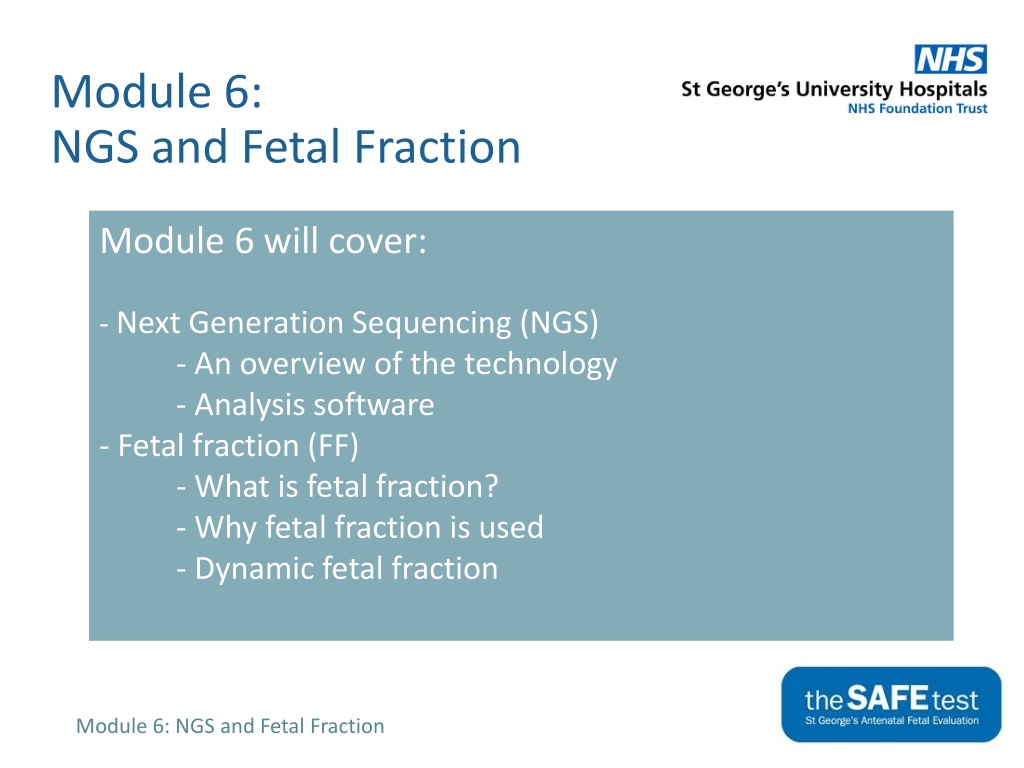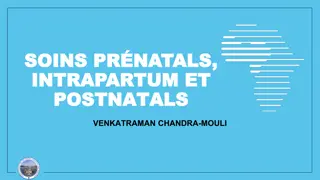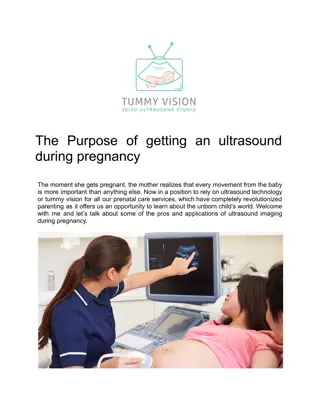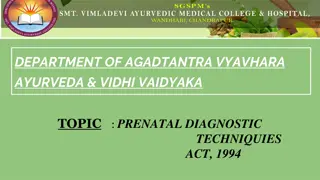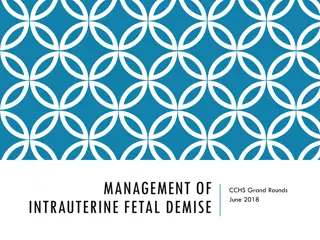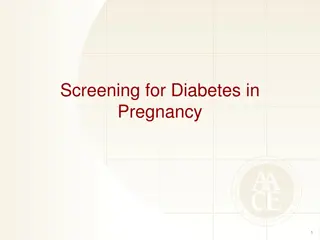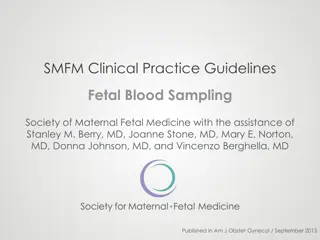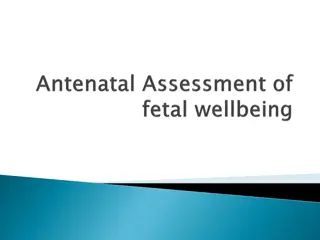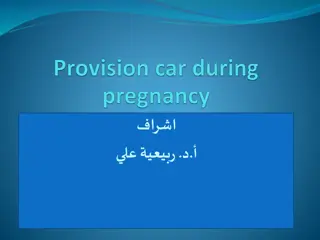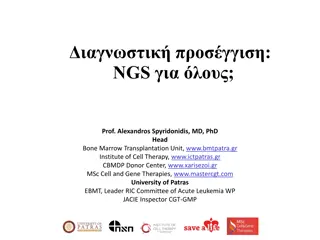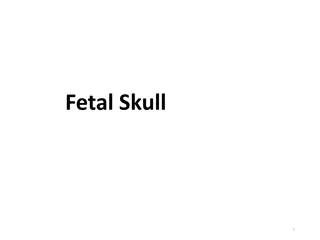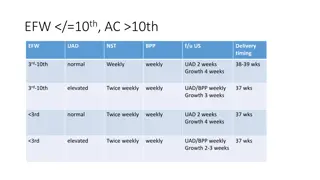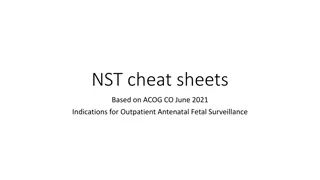Understanding NGS and Fetal Fraction in Prenatal Screening
Next Generation Sequencing (NGS) plays a key role in prenatal testing by analyzing cell-free DNA (cfDNA) to determine fetal fraction and detect genetic anomalies like Down syndrome. The process involves DNA extraction, library construction, barcode labeling, sample pooling, quantification, and sequencing. By utilizing advanced instruments like Illumina NextSeq 550Dx and Yourgene SP150/QS250, NGS enables high-throughput, accurate analysis of placental DNA, crucial for prenatal diagnosis.
Download Presentation

Please find below an Image/Link to download the presentation.
The content on the website is provided AS IS for your information and personal use only. It may not be sold, licensed, or shared on other websites without obtaining consent from the author. Download presentation by click this link. If you encounter any issues during the download, it is possible that the publisher has removed the file from their server.
E N D
Presentation Transcript
Module 6: NGS and Fetal Fraction Module 6 will cover: - Next Generation Sequencing (NGS) - An overview of the technology - Analysis software - Fetal fraction (FF) - What is fetal fraction? - Why fetal fraction is used - Dynamic fetal fraction Module 6: NGS and Fetal Fraction
Next generation sequencing (NGS) In a pregnancy where the baby does not have Down s syndrome, chromosome 21 represents 1.36% of the total cell-free DNA (cfDNA) in the maternal circulation. In a pregnancy where the baby does have Down s syndrome, this percentage rises to about 1.42% - only 0.06% difference. To distinguish such small differences in the amount of cfDNA found, incredibly accurate DNA counting and sorting methods are required. NGS sequencing enables millions of DNA strands to be sequenced in parallel, this is cheaper, quicker and generates more data. Module 6: NGS and Fetal Fraction
NGS workflow for cfDNA screening 1. DNA extraction: DNA fragments are extracted from blood plasma. In each 10 ml of blood there are millions of cfDNA fragments from all 23 chromosome pairs from both the placenta and the mother. 2. Fully automated DNA extraction and library construction is performed using the Yourgene SP150 instrument. Module 6: NGS and Fetal Fraction
NGS workflow for cfDNA screening 3. DNA fragments from the sample are modified, labelled with barcodes and amplified using PCR referred to as a library. The barcodes are specific to each individual patient sample and are used to identify each patient s DNA after sequencing. 4. Patient samples are pooled. Prior to this samples are measured (quantified) to ensure that there is an equal representation of each sample in the pool. Module 6: NGS and Fetal Fraction
NGS workflow for cfDNA screening 5. Quantification and innovative enrichment of the placental DNA is performed using the Yourgene QS250 instrument. This instrument efficiently selects a high proportion of the DNA fragments that are of interest for the analysis resulting in improved DNA sequencing results. Module 6: NGS and Fetal Fraction
NGS workflow for cfDNA screening 6. Sequencing is performed using the Illumina NextSeq 550Dx instrument. This provides a flexible workflow with up to 48 patient samples per sequencing run. Module 6: NGS and Fetal Fraction
Analysis of sequencing data The sequenced cfDNA fragments are aligned to a reference genome. Reference Genome Placental and maternal DNA fragments The fragments are then counted and an overall amount of DNA is assigned to each chromosome. The amount of chromosome 13, 18 and 21 is then compared against the total amount. Module 6: NGS and Fetal Fraction
Analysis & mapping distribution Each patient sample is assessed by looking at the sequence quality, count density, controls and fetal fraction. This is all performed and analysed using advanced computer technologies to report on: How well the flow cell was loaded. If there is enough DNA in the wells. How many wells have good quality data. All these processes ensure high confidence in a high and low chance result. Module 6: NGS and Fetal Fraction
Fetal Fraction cfDNA in maternal plasma is a mixture of maternal and placental cfDNA. The proportion of cfDNA from the placenta is known as fetal fraction . All NIPT tests are affected by the fetal fraction of cfDNA. Most, but not all, cfDNA screening tests measures fetal fraction in analysis. Module 6: NGS and Fetal Fraction
cfDNA screening tests and measuring fetal fraction One study involved analysis of non-pregnant blood samples. Laboratories that did not measure fetal fraction reported a female infant no aneuploidy because the test analysed only maternal cfDNA and presumed placental cfDNA present If a mother has a low fetal fraction it can impact the ability to generate a result on the sample Studies have shown that pregnant women with a large BMI, earlier in pregnancy and some other factors too, can have a low fetal fraction Module 6: NGS and Fetal Fraction
Dynamic fetal fraction Sample/run validity Count density Sequencing QC Valid run control Valid Result The fetal fraction estimation and QC check is the final step in the analysis process Fetal fraction GC Content Module 6: NGS and Fetal Fraction
Fetal Fraction in the SAFE test The FF estimate needs to be applied with consideration for (i) other available data and (ii) the technology used The SAFE test firstly, uses a hard cut-off of 2% 2%, QC check passes Sample FF estimated <2%, QC check fails Accounts for <0.5% of the sample population Module 6: NGS and Fetal Fraction
Fetal Fraction: Sample/run validity A valid SAFE test result is a balance of fetal fraction (FF), count density and chromosome ratio First, determination of whether the dynamic check is required (FF of 2-4%) If it is required, the number of aligned sequencing reads is assessed (count density) which allows for the required level of FF to be determined. A higher count density means the FF% required can be lower. Conversely, a lower count density will require a higher fetal fraction. Fetal Fraction Count Density Result Scenario 1 2-8% Valid Scenario 2 <2% Invalid Scenario 3 >8% Invalid Module 6: NGS and Fetal Fraction
